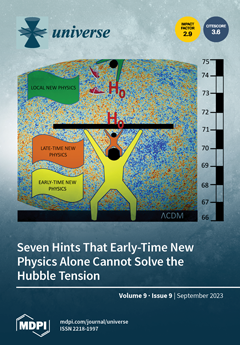The power spectra of the magnetic field at ion kinetic scales have been found to be significantly influenced by Alfvén ion–cyclotron (AIC) waves. Here, we study whether and how this influence of the AIC wave depends on the
angle (the angle between the local mean magnetic field and the solar wind velocity direction). The wavelet technique is applied to the high time-resolution (11 vectors per second) magnetic field data from
WIND spacecraft measurements in a fast solar wind stream associated with an outward magnetic sector. It is found that around the ion kinetic scales (0.52 Hz–1.21 Hz), the power spectrum in the parallel angular bin
has a slope of
. When we remove the left-handed polarized AIC waves (with normalized reduced magnetic helicity smaller than
) from the fluctuations, the spectral index becomes
. However, the power spectrum in the perpendicular angular bin
changes very little during the wave-removal process, and its slope remains
. These results indicate that the influence of the AIC waves on the magnetic spectral index at the ion kinetic scales is indeed dependent on
, which is due to the anisotropic distribution of the waves. Apparently, when the waves are removed from the original data, the spectral anisotropy weakens. This result may help us to better understand the physical nature of the spectral anisotropy around the ion scales.
Full article





